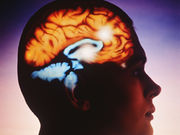Circadian rhythm disruption may interact with sex to modulate pathological effect of stroke
WEDNESDAY, June 8, 2016 (HealthDay News) — Circadian rhythm disruption associated with shifted light:dark (LD) cycles exacerbates stroke outcomes in a rat model, according to an experimental study published online June 2 in Endocrinology.
David J. Earnest, Ph.D., from the Texas A&M Health Science Center in Bryan, and colleagues observed male and female rats during exposure to a fixed LD 12:12 cycle and a shifted (12 hour advance/five days) cycle for about seven weeks.
The researchers found that circadian entrainment of activity rhythms was severely disrupted when the LD cycle was routinely shifted. In all shifted LD females, cyclicity was abolished and persistent estrus was evident. The estrous cyclicity disruption correlated with a significant increase in serum estradiol levels relative to those seen in fixed LD controls. In shifted LD male and female rats, circadian rhythm disruption exacerbated stroke outcomes and further amplified sex differences in stroke impairments. After exposure to the shifted LD cycle, circadian disruption correlated with a high rate of mortality in males, but not females. Following exposure to shifted LD cycles, circadian desynchronization correlated with significant increases in stroke-induced infarct volume and sensorimotor deficits, with corresponding decreases in serum insulin-like growth factor-1 levels in surviving females.
“These results suggest that circadian rhythm disruption associated with shift work schedules or the irregular nature of our everyday work and/or social environments may interact with other non-modifiable risk factors such as biological sex to modulate the pathological effects of stroke,” the authors write.
Copyright © 2016 HealthDay. All rights reserved.








